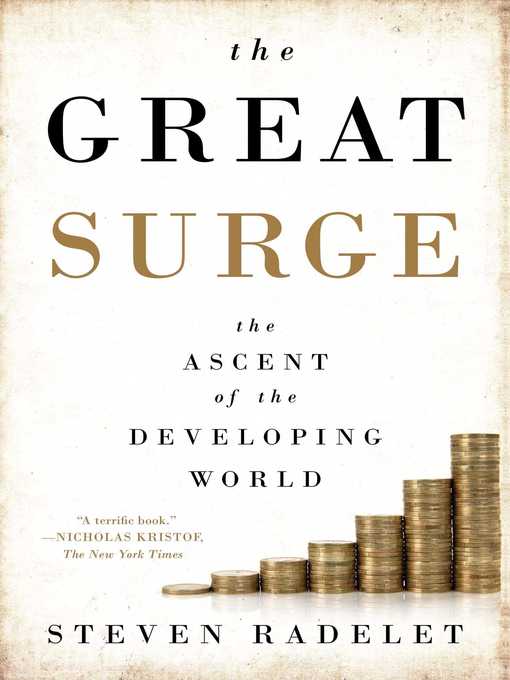
The Great Surge
The Ascent of the Developing World
کتاب های مرتبط
- اطلاعات
- نقد و بررسی
- دیدگاه کاربران
نقد و بررسی

August 24, 2015
Radelet, economic adviser to the president of Liberia, succeeds in making a possibly counterintuitive argument: notwithstanding the often depressing nature of news coverage of developing countries, this era has seen the most “progress among the global poor in the history of the world.” He has the statistics to back up this claim: for example, between 1990 and 2015, one billion people escaped “extreme poverty.” He cites similar data with respect to hunger and child deaths. Radelet does not contend that suffering has ended by any means, but his accessible and articulate presentation is likely to convince readers that the story of global development is more complex, and positive, than many believe. His case is buttressed with examples from history, demonstrating that most of humanity was extremely poor (by modern standards) until quite recently, and how slow and gradual the expansion of prosperity has been. He acknowledges that recent trends may not continue, and that despite technological advances, humans might not be able to meet our growing needs for food, water, energy, and other resources in the decades ahead. Nonetheless, this is a refreshing counterperspective that can only enhance informed debate on the topic.

October 15, 2015
Contrary to what it may seem like from the news, Radelet (Donald F. McHenry Chair in Global Human Development, director, Global Human Development Program, Georgetown Univ.; Emerging Africa: How 17 Countries Are Leading the Way) demonstrates how, in comparison to the past, fewer people today live in extreme poverty. Using the measure of poverty as living on $1.25 per day or less, the author illustrates the progress that has been made while still acknowledging the work to be done. The analysis focuses on 109 developing countries, which are included for reference in the appendix, and the "four critical dimensions of development progress: poverty, income, health and education, and democracy and governance." The book is comprised of three sections, beginning with an outline of the transformation that has occurred, then providing a deeper look at some of the drivers behind the greater prosperity in the developing world, including the spread of democracy, and finally detailing visions for the future. VERDICT This work will appeal to those interested in politics, economics, medicine, education, and the developing world in general.--Elizabeth Nelson, McHenry Cty. Coll. Lib., Crystal Lake, IL
Copyright 2015 Library Journal, LLC Used with permission.

























دیدگاه کاربران